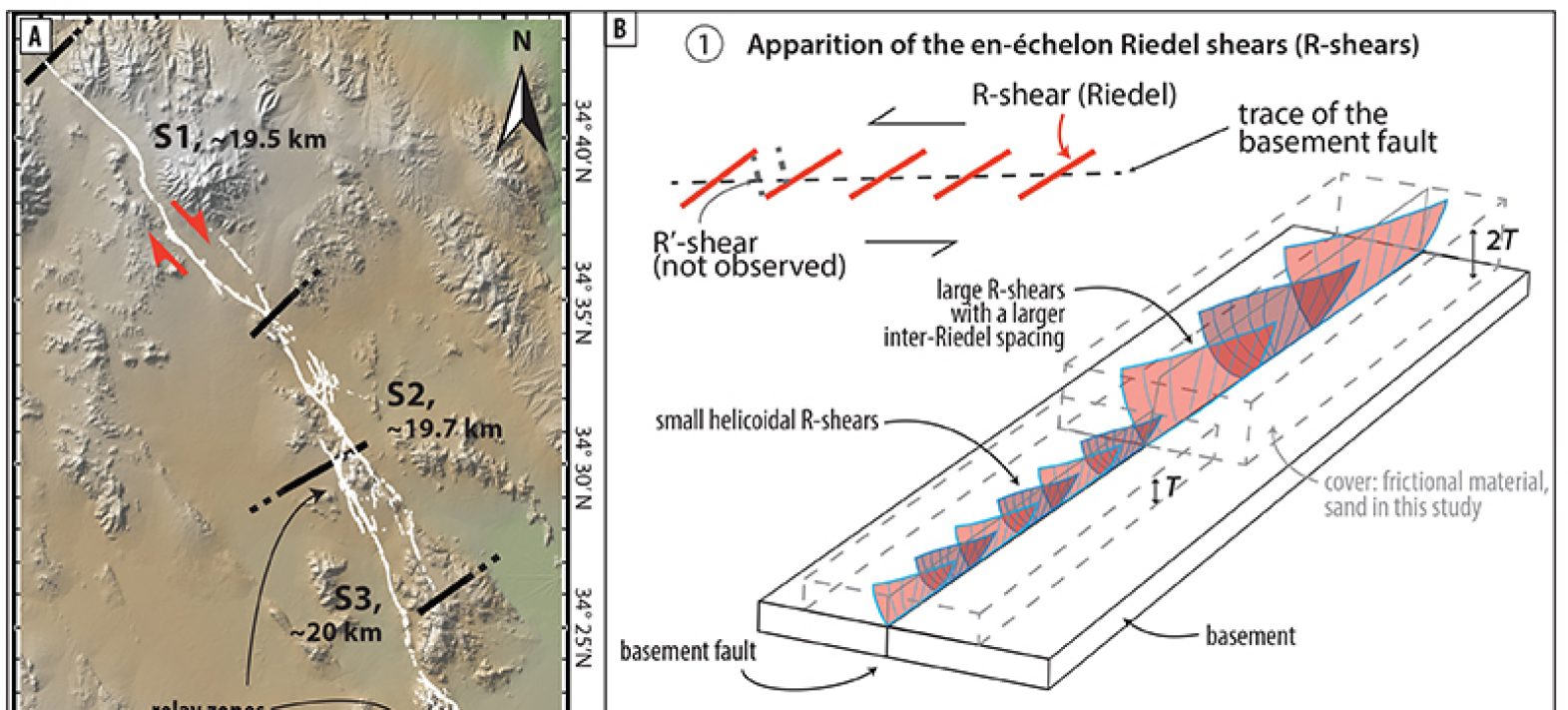Experimental testing of processes controlling the structuring of major continental rifts
Assessing the seismic hazard in continental strike-slip zones (faults that are usually vertical and along which two blocks slide horizontally in relation to each other), such as the San Andreas Fault in the USA or the Levant Fault in the Near East, involves integrating past and present seismic activity, tectonic loading rates and, critically, fault geometry into a single model. The combination of these different observations enables us to compile synthetic catalogs listing a sufficiently large number of earthquakes to calculate the probability of a specific rupture scenario occurring.

Publication date: 17/09/2020
Press, Research
Related teams :
Tectonics and Mechanics of the Lithosphere
Related themes : Earth System Science, Natural Hazards









